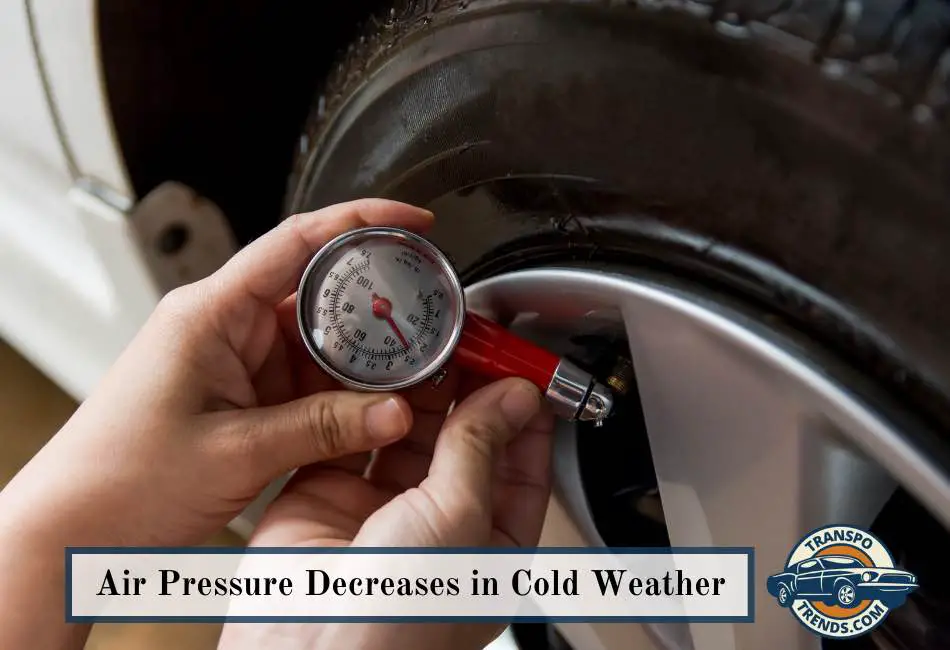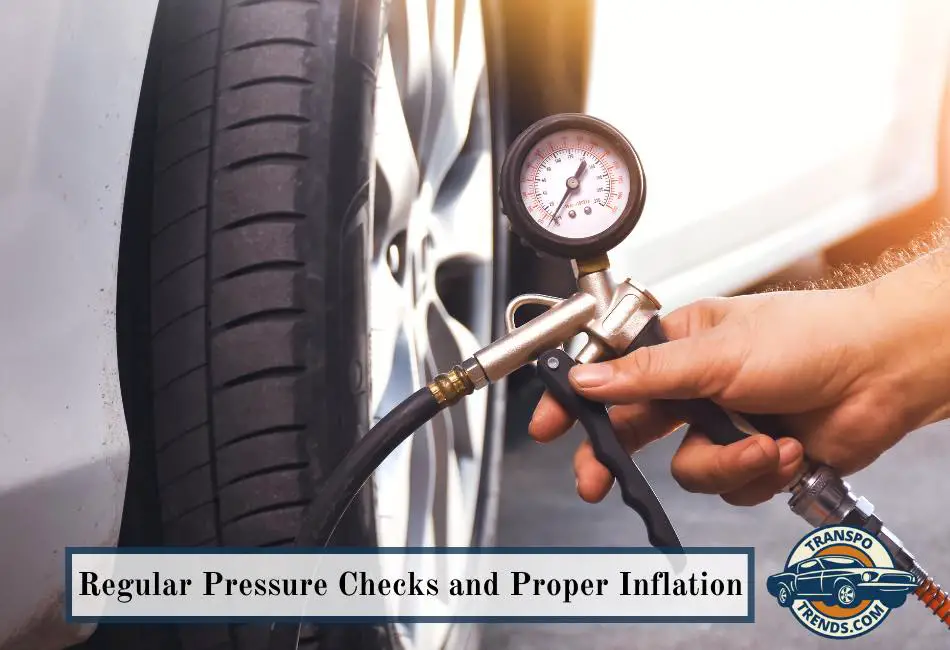As the temperature drops during the colder months, many vehicle owners experience a common, yet often misunderstood, issue: low tire pressure. This phenomenon, directly due to cold weather, isn’t just a minor inconvenience.
It significantly impacts vehicle safety, making tire maintenance essential to automobile upkeep, particularly during winter.
Proper tire pressure ensures optimal vehicle performance and minimizes the risk of tire-related accidents.
Modern vehicles come equipped with a safety feature known as the Tire Pressure Monitoring System (TPMS), which alerts drivers of significant changes in tire pressure, enabling timely corrective action.
This article will explore the reasons behind this weather-induced tire deflation and provide insightful tips on tire maintenance in cold weather.
Cold Weather and Tire Pressure
Understanding the Effect of Cold Weather on Tire Pressure
I remember the first time I noticed my tire pressure dropping as the season turned chilly; I was puzzled.
After running some Google searches and speaking with my trusted mechanic, I learned that cold weather causes the air inside tires to become denser. Not only that, you can also expect your headlights to get condensation in cold weather.
Sounds like something out of a physics class, right? It’s all about the ideal gas law, which states that pressure is proportional to temperature. When the temperature drops, the pressure does too.
The 1 PSI Drop Rule
This isn’t just a vague correlation between cold weather and tire pressure. In fact, it’s quite a precise relationship.
For every 10°F decrease in ambient temperature, your tire pressure will drop by about 1 PSI. I often think about this when I’m checking my tires in the garage on a frosty winter morning.
I recall one particularly frigid day when the temperature had dropped significantly overnight. Sure enough, when I checked my tires, they were a few PSI lower than they should have been.
The Importance of Regular Pressure Checks in Fall and Winter
With the fluctuating temperatures of fall and winter, regular tire pressure checks are even more critical.
During these colder months, I make it a weekly ritual to check my tires. It’s become as much a part of my routine as my morning coffee.
It might seem like a hassle, but it only takes a few minutes. Plus, it’s worth it to ensure optimal vehicle performance and safety.
Also, it helps me avoid that annoying TPMS alert. Let’s just say, I’ve learned my lesson the hard way with that one!
How Cold Weather Affects Tire Rubber

Contraction of Rubber in Cold Temperatures
You know how you tend to huddle and curl up when it’s cold? Well, your tires do something similar.
Cold temperatures cause the rubber in your tires to contract. I remember one winter when I was driving upstate, and the temperature was so low that I could see the tires had gone a bit flat.
I wondered how long I could drive on a flat tire without damaging my rims. I realized then how sensitive rubber is to temperature changes.
Slow Air Leakage
When the rubber contracts, it creates small spaces between the tire and the rim. This can allow slow air leakage, which might not be immediately noticeable.
I had a friend who drove to work one cold morning without realizing his tire was slowly losing air. Halfway through, he ended up with a flat tire.
It was inconvenient and avoidable; he had just neglected to check his tire pressure before leaving.
Risk of Using Summer Tires in Winter
And then there’s the risk of using summer tires in winter. Trust me, it’s not a smart move. Once, against better judgment, I kept my summer tires on as winter approached, thinking, “How bad could it be?”. It was a decision I quickly regretted.
The summer tires hardened in the cold, resulting in reduced traction. It felt like I was driving on a skating rink! These experiences taught me the importance of selecting the appropriate tires for each season.
You can checkout our topic for the best snow socks for car tires here on Amazon!
Winter tires are designed to stay flexible in cold temperatures, providing better grip and improved braking.
It’s a bit of an investment, but from my experience, it’s completely worth it for its safety and peace of mind.
Air Pressure Decreases in Cold Weather

Let’s get into the nitty-gritty of why air pressure decreases in cold weather. It’s all about the behavior of air molecules.
Air Contraction in Colder Temperatures
Remember that science class where we learned about how atoms and molecules move? It’s the same principle here.
In colder temperatures, air molecules move slower and closer together, causing the air to contract.This is precisely what happens inside your tires.
Slower Movement of Air Molecules Leading to Lower Pressure
Here’s an interesting fact: their pressure decreases when air molecules slow down. Picture this – you have a party with everybody dancing and moving around (like molecules in warmer temperatures).
There’s a lot of energy, and the room feels ‘fuller.’ When everyone starts to slow down or take a seat (like molecules in colder temperatures), the room feels less ‘pressurized.’
Need for Regular Pressure Checks
One way to counteract this is by driving, which warms up the tires and makes the air molecules move faster again.
This emphasizes the importance of regular pressure checks to ensure optimal tire performance, especially in the winter months.
It’s a habit I’ve cultivated, saving me from unexpected flat tires on more than one occasion.
3 Reasons Your Cold Tires May Be Flat
1. Decreased Internal Air Pressure
The physics behind this is simple: as temperatures drop, the air molecules inside the tire move slower, causing a decrease in pressure.
According to a CBS news interview with Rauso, “When temperatures decrease, tire pressure is likely to decrease as well. In the case of aluminum wheels, they tend to contract slightly, causing the air to escape”.
This can be risky, as low pressure can put you in a dangerous situation on the road. There’s also the hazard of tube rupture, which could lead to a complete air loss in your tire.
2. Rubber Hardening in Cold Temperatures
Now, let’s talk about the material of your tires – rubber. Rubber tends to harden in extremely cold temperatures, particularly below -10°F.
This is similar to how we layer up in the winter, but our movements become stiff because of all the heavy clothing.
In the case of tires, the hardening increases the likelihood of damage as the tire becomes less flexible and cannot regain shape after being flattened by the car’s weight.
3. Ice Formation Between Tread and Road Surface
Finally, one of the most overlooked risks is ice formation between the tire tread and the road surface.
The decreased friction can lead to tire failure. It’s like ice skating: your skates slide smoothly over the ice because of the reduced friction.
But imagine if your car tires need to “skate” on icy roads – it’s not ideal!
Understanding road conditions in cold weather cannot be stressed enough, as it plays a crucial role in maintaining your tires and ensuring safe driving.
Prevention Measures
Regular Pressure Checks and Proper Inflation

After these experiences, I’ve diligently checked my tires, especially in cold weather.
Regular pressure checks are vital in catching any loss of air pressure early before it becomes a significant issue.
Ensuring proper inflation helps maintain the flexibility of the rubber, reduce the risk of flats, and ensure efficient fuel consumption
Conclusion
To wrap things up, let’s revisit the key takeaways. Firstly, cold weather poses a significant threat to your tires, reducing air pressure and hardening the rubber, leading to a rougher ride and the risk of flats.
Secondly, regular pressure checks are your first line of defense against these issues, as they can help you spot loss of air pressure before it becomes severe.
I cannot stress enough the importance of regular tire maintenance, especially during the colder months.
I’ve learned that an underinflated tire on a freezing night can lead to an unexpected flat and a hefty repair bill. The unpleasant feeling of waiting for roadside assistance in the chilling cold is something I wouldn’t wish on anyone.
I strongly encourage you to maintain your tires proactively in cold weather. Think of it as bundling up in a warm coat before entering the cold.
Your tires need the same care and attention. So, before you hit the road, make it a habit to check your tire pressure. Stay safe, keep your tires healthy, and enjoy a smooth, worry-free ride this winter!
